shoulder or butt?
You may think from the title that this post is an update on my dad’s recent shoulder surgery. Or me updating you on the fact that he went down our staircase on his butt. That wasn’t the original intention, but I will give you that update first and then tell you all about the difference between pork shoulder and pork butt.
So … less than 48 hours after his rotator cuff surgery, my dad decided he should attempt coming down the stairs on his own. Not the best idea! While holding the rail with his left hand (not all the strong since his stroke a few decades back) and with his right arm in a sling, he slipped, hit his right side on the stairs, and slid down to the bottom on his behind.
I could wring his neck! We’d talked about the stairs the day before and I told him I didn’t want him on them without me, Dave, or Connor there to assist. Sunday morning, he decided he didn’t want to bother us, so down he went.
Monday, I took him in for x-rays, and thankfully, the shoulder is fine but he does have two broken ribs. Arrrg!!!! So we’ll be tacking on several more days is not weeks to his stay at the Hopkins’ Recuperating Home. OK, enough of that – on to the pork.
There is often confusion about the cuts of pork referred to as pork shoulder and pork butt. Pork shoulders, pork butts, and picnic “hams” are all part of the same front leg and shoulder of a hog.
What is commonly sold as a pork butt and Boston butt are the same cut of meat – the top portion of what is considered the “whole shoulder” of the hog. This cut is very marbled and often sold skinless, with a large portion of fat on top. The “butt” can be sold boneless or bone-in and weighs between 6 and 9 pounds on average for bone-in, or between 4 and 7 pounds if boneless. There is no need to search out the boneless variety. The bone, the blade, is thin and flat and not at all a nuisance, as you’ll see in the photos below.
In comparison, the pork shoulder is the lower portion of the shoulder. It is located below the joint and above the shank (leg). It is smaller than the pork butt and contains more fat, bone, and connective tissue. It is often sold complete with skin and is rarely sold boneless. This smaller roast usually weighs in at between 4 to 5 pounds.
The important thing to know is that no matter which cut you find in your market, all are interchangeable in any recipe (shredded pork or otherwise) that calls for pork shoulder or pork butt.
Slow Cooker Asian Pork Shoulder or Butt
1 tablespoon olive oil
6 to 9-pound pork butt or shoulder
Salt and freshly ground black pepper
4 cups chicken broth, divided
3-inch piece ginger, peeled and minced (reserve the peel)
3 star anise
6 garlic cloves, peeled and minced
1 cup soy sauce
1 cup seasoned rice vinegar
1 cup oyster sauce
1/4 cup chili garlic sauce
Zest and juice of 2 oranges
Heat the olive oil in a large skillet. Sprinkle the pork with salt and pepper and brown it on all sides. Remove from the pan and transfer to a slow cooker. Deglaze the skillet with 1 cup of chicken broth and add the deglazing broth to the slow cooker.

Place the reserved ginger peels and the star anise in a piece of cheesecloth and enclose to make a little purse, then tie with kitchen string and add to the slow cooker. Add the remaining broth, garlic, soy sauce, vinegar, oyster sauce, chili sauce, orange juice, and zest to the slow cooker.
Cover and cook on HIGH for 4 hours. Change the cooker to LOW and cook until the meat is very tender, at least another 2 hours.
When the pork is tender enough to shred, remove it to a plate, discarding the bone. Transfer the liquid to a saucepan and simmer until the liquid reduces to a thick and sticky consistency.
Shred the pork and coat with the sauce.
Serves 8 to 10

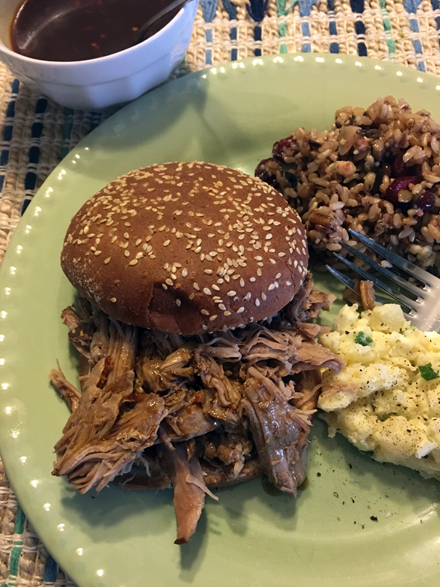

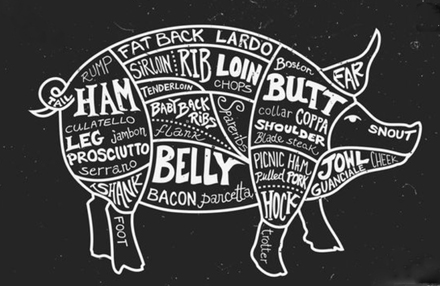
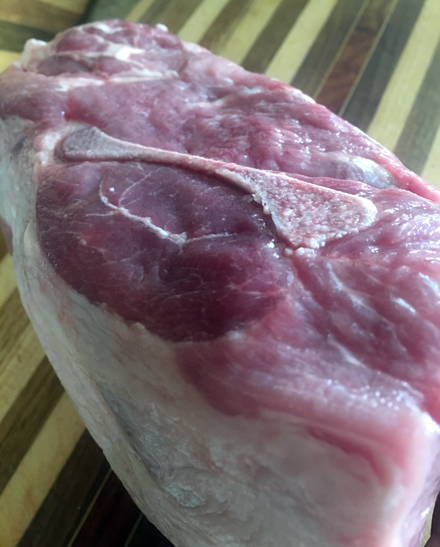
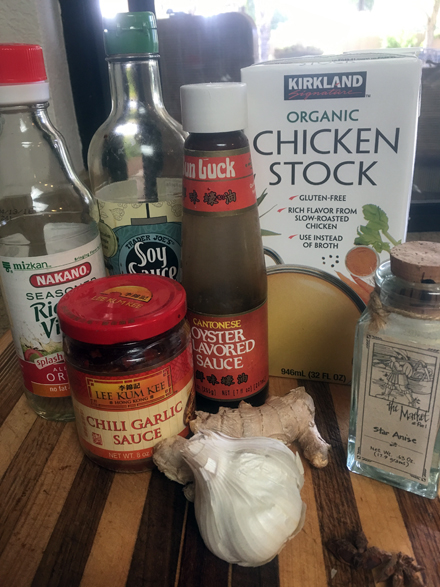

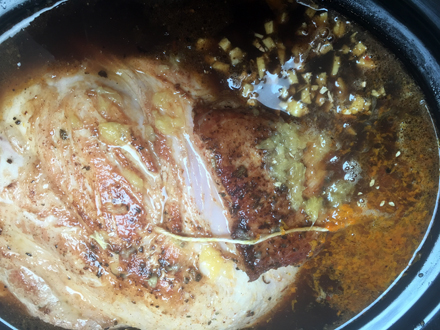
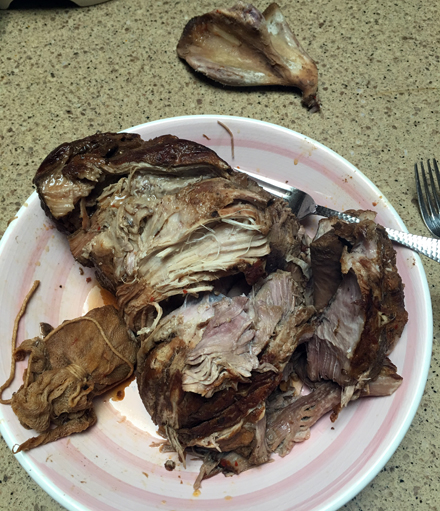




0 comments
Kick things off by filling out the form below.
Leave a Comment